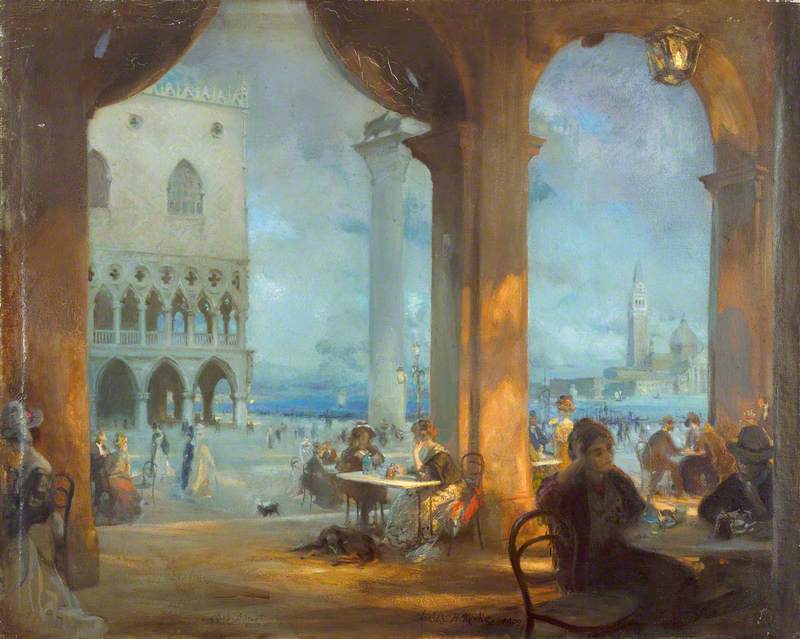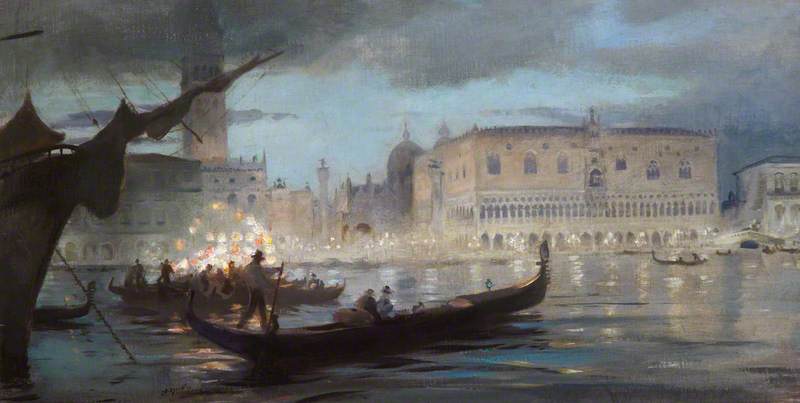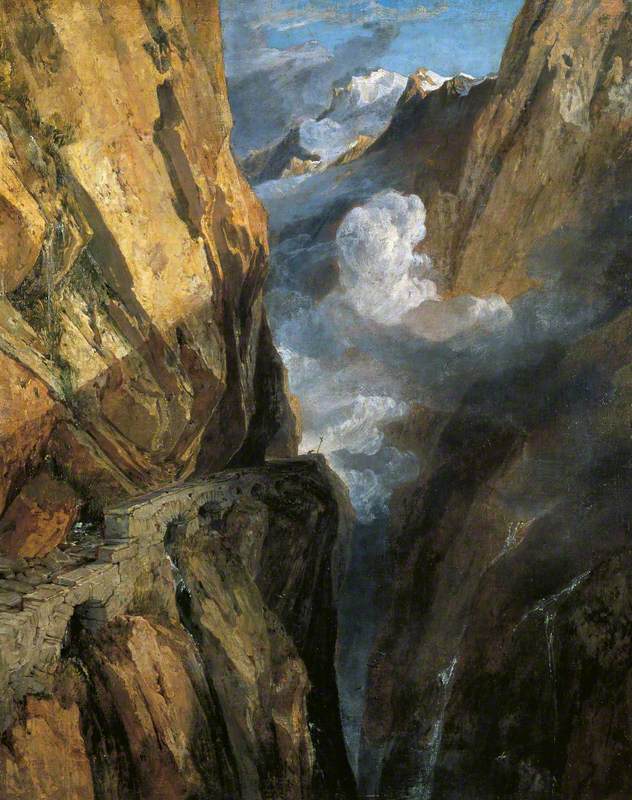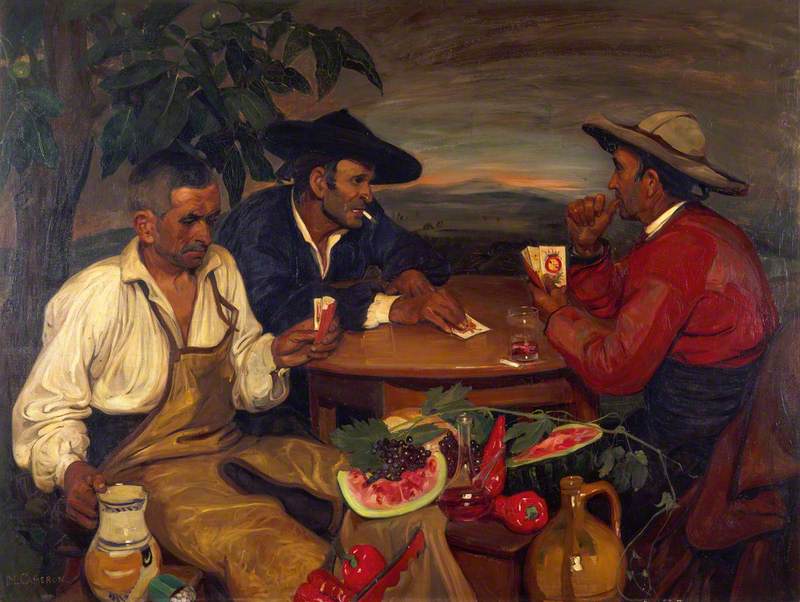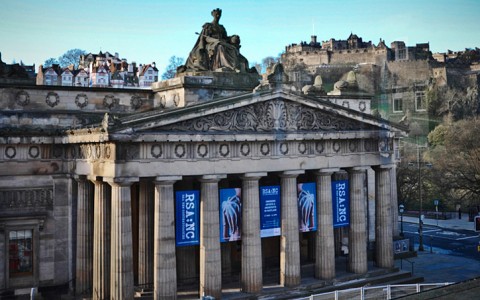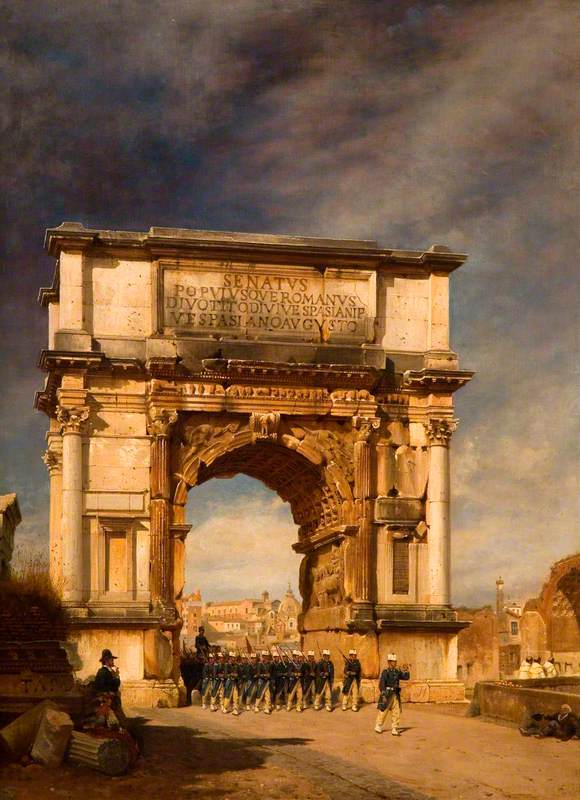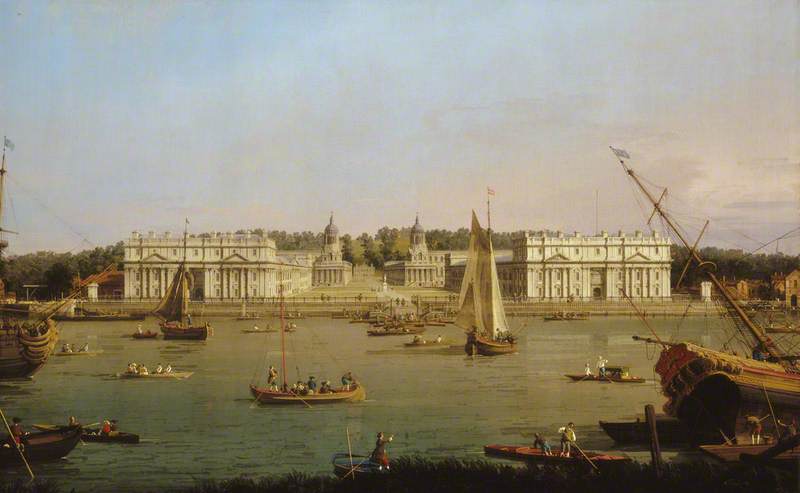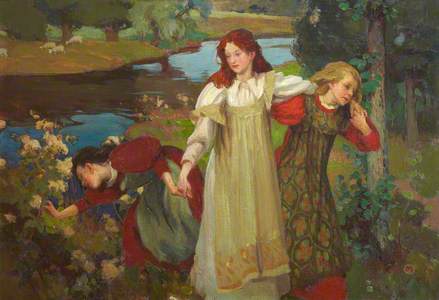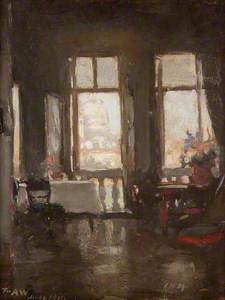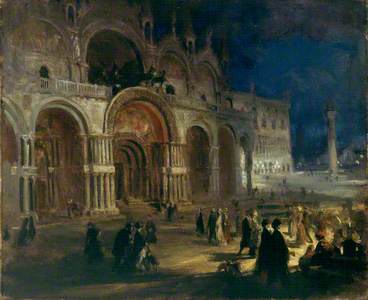Looking back on the career of the Scottish painter and printmaker Charles Hodge Mackie (1862–1920), his wife Anne described his time in Venice as a revelation. It was, she wrote in her journal, 'the crowning moment of his aesthetic life'.
St Mark's, Venice
c.1909, watercolour on paper by Charles Hodge Mackie (1862–1920) 
Mackie was captivated by Venice, and the Italian city inspired some of his finest work. An exhibition at the City Art Centre in Edinburgh, 'Charles H. Mackie: Colour and Light', now charts the story of the artist's life, bringing together over 50 artworks from public and private collections. The final room in the exhibition explores the latter part of his career, with a particular focus on Venice.
'Charles H. Mackie: Colour and Light' exhibition installation, 2021, City Art Centre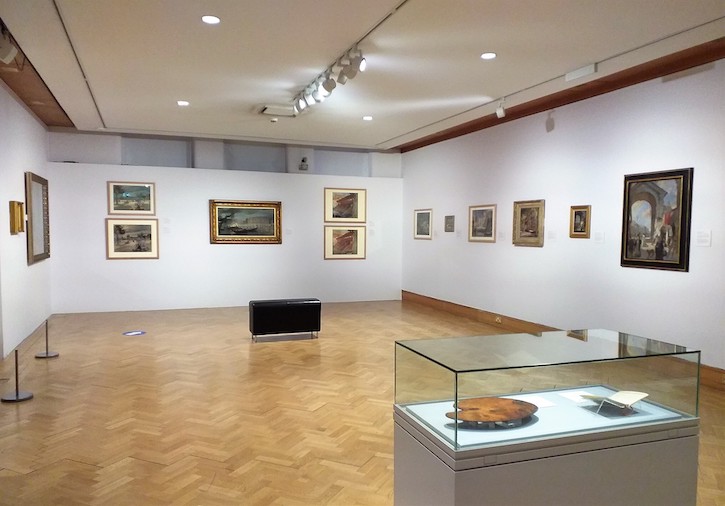
Mackie trained at the Trustees Academy School of Art in Edinburgh during the late 1870s and early 1880s, and spent his entire professional career based in the Scottish capital. Nevertheless, travel was always an important source of creative stimulation.
In his youth, while financial hardship restricted his movements, he still managed excursions into the local countryside. Seeking to paint directly from nature, he visited rural spots in East Lothian, Fife and the Borders. There were also longer stays in Kirkcudbright, encouraged by his friend and fellow student Edward Atkinson Hornel.
By the 1890s, Mackie was able to venture further afield. In spring 1892, he embarked on a walking tour of Brittany, where he met Paul Sérusier, the leader of the avant-garde group Les Nabis. This career-defining encounter prompted further visits to Paris, and introductions to prominent Symbolist artists including Édouard Vuillard and Paul Gauguin.
Fascinated by their progressive outlook, Mackie was compelled to experiment with Symbolism in his own practice, ultimately leading to bold compositions such as There were Three Maidens pu'd a Flower (By the Bonnie Banks o' Fordie).
'There were three maidens pu'd a flower (by the bonnie banks o' Fordie)'
c.1897
Charles Hodge Mackie (1862–1920) 
As the twentieth century dawned, he continued to travel for inspiration. Between 1903 and 1904, he toured Spain with the Yorkshire artist Lionel Crawshaw. He also spent increasing amounts of time in France, portraying picturesque farms in Normandy and Picardy, as in The Hay Cart.
Compared with his Symbolist period, these works demonstrate a more subtle treatment of colour and light. This shift was driven partly by a need to appeal to the tastes of the Scottish art market – his Symbolist efforts were often judged too radical by critics – but it also reflected his enduring interest in capturing the atmosphere of a single moment. Whether he was depicting a fishing harbour at dawn or a harvest field at sunset, he wanted the viewer's experience of the scene to be palpable.
Charles H. Mackie with the painting 'For Harvest Festival', 1907
Mackie's sensitivity in this regard found opportunity for its fullest expression in Venice, a city of mesmerising light effects and tonal hues. His first visit took place in 1908. By this stage, he had attracted a loyal circle of patrons, and was experiencing growing commercial success.
Collectors such as Andrew Carnegie, Ernest Auldjo Jamieson and John James Cowan regularly purchased his work. Their support significantly increased his financial security, enabling him to enjoy prolonged spells abroad.
Between 1908 and 1914, Mackie made several extended trips to Venice. He usually stayed at the Casa Frollo, a pensione on the island of Giudecca overlooking the entrance to the Grand Canal. This central location offered easy access to the city's architectural riches. An Interior, Venice, which depicts the layout of the apartment and view from the balcony, indicates the proximity of the famous dome of Santa Maria della Salute.
The churches, palaces, cafés and canals provided plentiful material for the artist; he soon became utterly absorbed. His output included oil sketches and watercolours, as well as large-scale oils on canvas.
St Mark's by Moonlight, Venice
c.1908–1912
Charles Hodge Mackie (1862–1920) 
Evening scenes were a favourite subject to which he often returned, finding renewed beauty every time in the moonlit buildings and shadowy waters. La Piazzetta, Venice is a particularly atmospheric example.
Here, seated couples converse in the lamplight beneath the arcade of the Biblioteca Marciana, while twilight deepens into night across the lagoon.
Mackie balances the natural and artificial light sources, delicately articulating their transitory interplay. When the painting was exhibited at the Royal Scottish Academy in 1910, audiences immediately recognised his accomplishment. As a critic for The Studio remarked, the artwork 'in brilliance and subtlety, reaches a higher level than he had previously attained as a colourist'.
Another nocturnal view, La Musica Veneziana, portrays the architecture of the Piazza San Marco from the sea.
A fleet of gondolas glides past the Doge's Palace, their forms silhouetted against the bright illuminations that reflect upon the water. This painting was purchased shortly after completion by the Scottish Modern Arts Association, an organisation established in 1907 to build a national collection representing the best of Scottish art.
Mackie's wife and young son normally accompanied him to Venice, and he sometimes met up with friends there. However, art always took precedence over leisure and socialising. As his wife later recalled, 'he worked day after day, all through the summer in intense heat when even the Venetians groaned under the burning sun or fled to the mountains, grudging the time it took for a swim at the Lido'.
This unwavering dedication had notable results. In addition to producing a prolific volume of oil paintings and watercolours, he also created three coloured woodcut prints based on Venetian views. Inspired by traditional Japanese woodblocks, Mackie had been experimenting with printmaking since the late 1890s. He developed this aspect of his practice in tandem with painting, using a highly disciplined methodology to achieve ever more nuanced effects.
Once again, Venice provided a catalyst for progress. The challenge of recreating the city's shimmering vistas in print spurred him into devising some of his most complex woodcut designs. The Palace Gardens, Venice, for instance, is an image built up gradually through incremental layers of pigment, applied using as many as ten separate printing blocks.
The Palace Gardens, Venice
c.1910, coloured woodcut print on paper by Charles Hodge Mackie (1862–1920) 
Despite this laborious process, the finished composition still possesses a sense of spontaneity akin to watercolour – a testament to his innovative skills.
Mackie's Venetian woodcuts, like his paintings, were widely admired. In July 1912, The Palace Gardens, Venice was one of four recent works by the artist to be shown at the Stedelijk Museum in Amsterdam. That same year it was also exhibited at the Louvre in Paris, as part of a display showcasing contemporary British printmakers. It caught the eye of Walter Sickert, who wrote to congratulate Mackie and purchased an impression for his personal collection.
Most of Mackie's woodcuts are based on watercolour studies. For the exhibition 'Charles H. Mackie: Colour and Light', several of these pairings were identified and presented side by side to illustrate the artist's versatility across different media. Bassano Bridge, Venice, accompanied by its corresponding woodcut, is a particular highlight.
Bassano Bridge, Venice
1911, watercolour on paper by Charles Hodge Mackie (1862–1920) 
This watercolour depicts the wooden bridge at Bassano Veneto (now known as Bassano del Grappa), a town some 40 miles northwest of Venice. The dynamic composition and rich colour scheme provide ideal ingredients for a woodcut. Indeed, Mackie altered few elements from the original painting when developing the design.
The finished woodcut, Bassano Bridge, went on to become his most successful print, with impressions acquired by the British Museum and National Galleries of Scotland.
Bassano Bridge, Venice
c.1915, coloured woodcut print on paper by Charles Hodge Mackie (1862–1920) 
The watercolour remained with the artist until his death in 1920. It only became publicly accessible in 1970 when his son bequeathed it to Perth Museum & Art Gallery.
Mackie wrote very little about his experiences in Venice. However, the quality and quantity of artwork produced during and after his travels attest to the importance of this period in his career. Not only did he find Venice an endlessly stimulating subject, but his endeavours there brought him considerable plaudits and recognition.
Mackie's love affair with Venice was cut short by the advent of the First World War, and ill health meant that he never had the chance to return. Had events unfolded differently, it is tempting to imagine what else he might have achieved.
Helen Scott, Curator of Fine Art, City Art Centre
'Charles H. Mackie: Colour and Light' at the City Art Centre, Edinburgh, runs to 10th October 2021
Further reading
Pat Clark, People, Places and Piazzas: The Life and Art of Charles H. Mackie, Sansom & Co., 2016


